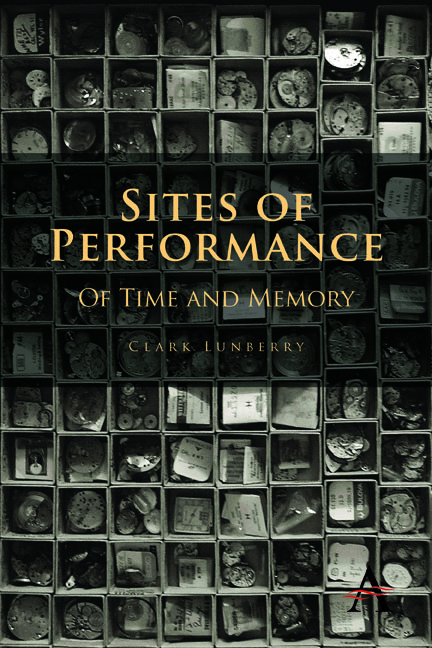Book contents
- Frontmatter
- Dedication
- Contents
- Acknowledgements
- Preface
- I Stagings: Plays of Space
- II Sightings: Sites of Time
- Chapter 5 Antonin Artaud's Unending Death Rattle
- Chapter 6 Writing upon Theaters of Tragic Thought
- Chapter 7 Figures of Speech: Ann Hamilton's Installations of Absence
- Chapter 8 Illuminated Theater: The Stages of James Turrell
- Chapter 9 Suspicious Silence: Walking Out on John Cage
- Chapter 10 In Living Memory: Morton Feldman's Departing Landscapes
- Postscript Seeing in Plain Sight—Installations in Flight
- Bibliography
- Index
Chapter 6 - Writing upon Theaters of Tragic Thought
from II - Sightings: Sites of Time
Published online by Cambridge University Press: 05 November 2014
- Frontmatter
- Dedication
- Contents
- Acknowledgements
- Preface
- I Stagings: Plays of Space
- II Sightings: Sites of Time
- Chapter 5 Antonin Artaud's Unending Death Rattle
- Chapter 6 Writing upon Theaters of Tragic Thought
- Chapter 7 Figures of Speech: Ann Hamilton's Installations of Absence
- Chapter 8 Illuminated Theater: The Stages of James Turrell
- Chapter 9 Suspicious Silence: Walking Out on John Cage
- Chapter 10 In Living Memory: Morton Feldman's Departing Landscapes
- Postscript Seeing in Plain Sight—Installations in Flight
- Bibliography
- Index
Summary
Was it not at this very instant that, having written something or other on the screen, the letters remaining as if suspended and floating yet at the surface of a liquid element, I pushed a certain key to ‘save’ a text undamaged, in a hard and lasting way, to protect marks from being erased, so as to ensure in this way salvation and indemnity, to stock, to accumulate, and […] to make the sentence available in this way for printing and for reprinting, for reproduction?
—Jacques Derrida, Archive FeverLook what thy memory cannot contain, Commit to these waste blanks.
—William Shakespeare, Sonnet #77In Artaud's “written drawings,” we saw the manner in which the writer enacted a kind of theatrical event, with the page as a stage, a “scene of the subjectile,” the violent site of the self's projected performance onto paper. In what follows, another such scene will be presented, another stage upon which thought is symptomatically enacted. This time, though, the page is my own, and the performance—less violent, more colorfully playful—is nonetheless revealing of the act of thoughtful repetition, and the recurring desire to get to the bottom of something which simultaneously rests on the surface and plunges infinitely into its own endless reference.
Jacques Derrida's important essay on Artaud, “The Theater of Cruelty and the Closure of Representation,” has already been multiply referenced in previous chapters.
- Type
- Chapter
- Information
- Sites of PerformanceOf Time and Memory, pp. 77 - 88Publisher: Anthem PressPrint publication year: 2014



